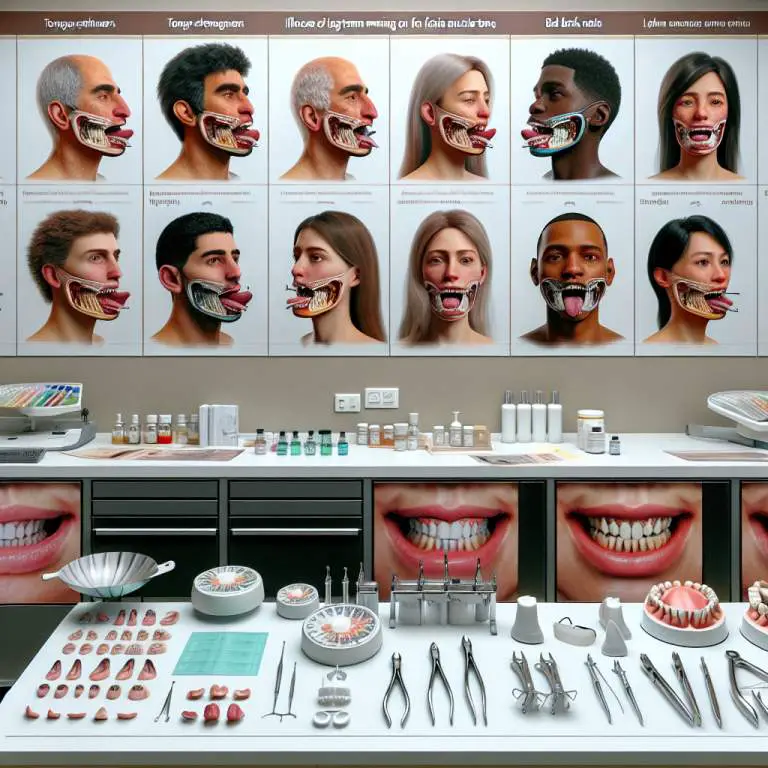How does the body adapt to mewing over extended periods?
When a person practices mewing over extended periods, the body adapts by potentially reshaping the jawline and aligning the teeth more naturally. This happens because the constant pressure from proper tongue posture encourages bone remodeling in the jaw and facial area. Over time, this can lead to improved breathing, better posture, and a more aesthetically pleasing facial structure.

How Does Mewing Affect Jawline and Facial Structure Over Time?
Mewing is a technique that involves positioning your tongue against the roof of your mouth. This action is supposed to help shape your jawline and facial structure over time. People who practice mewing believe it makes their faces look more defined.
As you keep doing it, the idea is that your jaw muscles get stronger and your face might change shape slightly. This doesn’t happen overnight, but some folks say they see changes after sticking with it for months or even years. It’s like a slow workout for your face.
What Are the Initial Physical Sensations or Changes One Might Experience When Starting Mewing?
When you first start mewing, you might feel a bit weird or uncomfortable. Your mouth isn’t used to holding your tongue in this new position, so it might feel tiring at first. Some people also notice their jaw feels sore or tight because of the new exercise.
After a little while, these feelings usually get better as your mouth muscles get stronger. You might also start to notice small changes in how your jaw and face look. These initial changes are subtle, but they can be exciting for someone who’s just starting out with mewing.
Can Mewing Influence Oral Health and How?
Mewing could have some benefits for oral health too. By keeping your tongue pressed up against the roof of your mouth, you’re helping to make sure your teeth are aligned nicely. Good tongue posture can help with breathing through your nose instead of your mouth, which is healthier for you.
This technique might also reduce snoring and improve sleep quality since it encourages better airway habits. However, remember that while mewing might help with these things, it’s not a cure-all solution for every oral health issue out there.
Does Age Impact the Effectiveness of Mewing Adaptations?
Your age can play a big role in how effective mewing is for you. Younger people, especially kids and teenagers, might see more noticeable results because their bones are still growing and changing shape. Their facial structure is more flexible, so practicing good tongue posture can really make a difference.
For adults, changes from mewing can take longer and may not be as dramatic. That’s because adult bones have stopped growing, making them less moldable compared to younger individuals’ bones. However, even adults can experience benefits from improved oral posture over time if they stick with it consistently.
| Aspect of Adaptation | Short-term Effects (1-6 months) | Long-term Effects (1 year+) |
|---|---|---|
| Jawline Definition | Mild improvement in jawline definition. | Significant enhancement in jawline sharpness and definition. |
| Bite Alignment | Slight changes in bite comfort; initial discomfort may occur. | Potential improvement in bite alignment and function. |
| Nasal Breathing | Minor improvements in nasal airflow. | Notable increase in ease of nasal breathing; reduction in mouth breathing habits. |
| Posture | Slight improvements in neck and head posture. | Marked improvements in overall posture, potentially reducing neck and back pain. |
| Facial Symmetry | Limited impact on facial symmetry. | Improvements in facial symmetry due to consistent muscle engagement and posture correction. |
| Sleep Quality | Possible slight improvement due to better breathing patterns. | Enhanced sleep quality owing to improved airway patency and reduced snoring or sleep apnea symptoms. |
| Aesthetic Confidence | Mild increase in self-perception and confidence related to physical appearance changes. | Significant boost in aesthetic confidence, often accompanied by positive feedback from social circles. |
What Scientific Evidence Supports the Long-Term Effects of Mewing?
Research on mewing is still in its early stages. However, some studies suggest that proper tongue posture can influence facial structure over time. These studies focus on the impact of orthotropic practices, which include mewing, on the alignment of teeth and jaw development.
Experts in the field argue that maintaining correct tongue posture can lead to noticeable changes. This includes a more defined jawline and improved facial symmetry. Yet, it’s important to note that scientific consensus is limited, and more research is needed to fully understand the long-term effects of mewing.
How Do Consistency and Technique Influence the Outcome of Mewing?
Consistency is key when practicing mewing. For individuals to see potential benefits, they must maintain correct tongue posture consistently throughout the day. This means keeping the tongue pressed against the roof of the mouth without causing strain or discomfort.
The technique also plays a crucial role in achieving desired outcomes. Proper guidance from experts or instructional videos can help ensure that individuals are practicing mewing correctly. Incorrect technique may not only diminish potential benefits but could also lead to discomfort or pain.
Are There Any Potential Risks or Downsides to Long-Term Mewing Practice?
While mewing is generally considered safe, there are potential risks associated with incorrect practice. If done improperly, it could lead to jaw pain, misalignment, or even temporomandibular joint disorder (TMJ). It’s crucial for individuals to listen to their bodies and avoid overexertion.
In addition, relying solely on mewing for significant facial changes without consulting healthcare professionals may lead to disappointment. Orthodontic issues often require professional intervention, and while mewing might offer some benefits, it should not replace traditional medical advice or treatments.
Final Thoughts
Mewing has gained popularity as a method for improving facial aesthetics through proper tongue posture. While anecdotal evidence suggests some benefits, scientific research remains limited in confirming these effects over time.
For those considering mewing as part of their daily routine, understanding the importance of consistency and correct technique is vital. Moreover, being aware of potential risks and maintaining realistic expectations can help ensure a positive experience with this practice.







